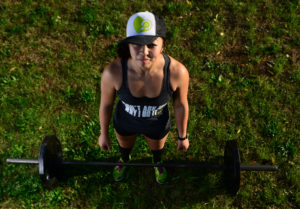


Remember when women used to lift those tiny pink dumbbells out of fear of “bulking up”? Groan. Thankfully, times have changed (mostly). These days, more and more women are discovering the sheer joy of heavy weight lifting—and getting stronger in the process.Are you one of these women? Or are you still in the process of being one? Would you like to be one?
Look Out 2 Most Important Things You Need to Know If You Want to Increase The Weight You’re Lifting
How do you know when it’s time to increase the weight you lift, though? Carefully deciding the right time to add more weight can prevent aches and injuries and maximize your results. Before you get carried away with the excitement of picking up those heavier dumbbells or loading up the bar with bigger plates, there are 2 most important things you need to know if you want to increase the weight you’re lifting:
Before you reach for a heavier set of dumbbells, your first priority should be making sure your weight lifting technique is on-point, says Holly Perkins, CSCS, author of Lift to Get Lean.
Ideally, you’ll find a coach or trainer who can give you real-time feedback on your form. Many gyms offer one free session of personal training, so ask about that if you didn’t use it when you joined. If you can’t afford a full personal training package, a coach should be able to quote you a rate for a one-hour session to work on your form. If that’s not an option, there are still ways to figure it out on your own.
 An easy way to determine if your technique gets a pass or a fail is to pay attention to any aches, pains, or mobility issues. For example, if you feel your knee tweak every time you squat, chances are your knees and ankles are misaligned. “If you don’t correct that and you add more weight, all you’re doing is reinforcing your misalignments,” Perkins says. And eventually, that knee tweak will become a full-blown injury.
An easy way to determine if your technique gets a pass or a fail is to pay attention to any aches, pains, or mobility issues. For example, if you feel your knee tweak every time you squat, chances are your knees and ankles are misaligned. “If you don’t correct that and you add more weight, all you’re doing is reinforcing your misalignments,” Perkins says. And eventually, that knee tweak will become a full-blown injury.
To dial-in on proper technique, Kate Gallagher, RKC, strength coach at The Movement Minneapolis, suggests finding at least five video tutorials for the exercise you’re working on so you can familiarize yourself with the movement patterns. “You’ll get an idea overall of a solid technique for that movement because there’d be commonalities across all of [the tutorials],” she says. Later, film yourself performing the exercise at a challenging weight so you can pinpoint any weak spots. (You can also just look in a mirror as you’re doing it, of course, but a video is the really best way to get an accurate view of your form.)
 Once your technique is solid, it’s time to note your energy level, because going heavier on a day when you’re overly stressed or tired is the perfect set-up for injury. “You want to go up [in weight] when you’re feeling strong and resilient and amazing,” Perkins says.
Once your technique is solid, it’s time to note your energy level, because going heavier on a day when you’re overly stressed or tired is the perfect set-up for injury. “You want to go up [in weight] when you’re feeling strong and resilient and amazing,” Perkins says.
To gauge whether you’re too drained to go heavier, Gallagher recommends testing your range of motion both before and after a slight increase in weight. How to do it: Perform a few repetitions of an exercise with your normal weight and then try to touch your toes, making sure to stop when you feel tightness in your hamstrings. For your next set, increase the weight five to 10 pounds and then do another toe-touch. If you’re able to reach as far or even further than you did on your first toe-touch, your body is giving you the green light to proceed with that heavier weight. On the other hand, if your range of motion decreases, it’s time to lighten up.
Once you know your form and you are mindful of how you’re feeling, you can now set goals to increase the weight you’re lifting. To know more, head on to this article: http://www.self.com/story/weight-lifting-increase
Here is another resource you can look into: https://www.nerdfitness.com/blog/strength-training-101-how-much-weight-should-i-be-lifting/
Here’s a related video on more weight training tips:
Are you now ready to increase the weights you’re lifting